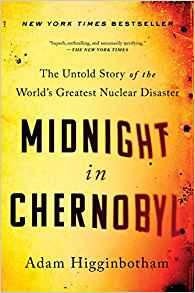Sarah Stern is the author of the new poetry collection We Have Been Lucky in the Midst of Misfortune. She also has written the poetry collections But Today Is Different and Another Word for Love. For her new book, she visited the southern German village where her mother was born. The book's title was taken from a letter her grandfather, a Jewish German soldier, wrote during World War I. Her mother's family later emigrated to New York, fleeing the Nazis.
Q: Over how long a period did you write the poems in your
new collection?
A: What became the center of the book, section two, took me
about four years to complete, which includes many revisions; but many of the poems
that are in this book and surround this section are from years ago, 20 or more.
I am thrilled that those older poems have a home now. I could not have known
this, and it brings me to the idea of patience in poetry. Poems need much
patience from us!
Q: The book's title came from a letter your grandfather wrote during World War I. How was the title (also the title of Part II of the book)
chosen, and what does it signify for you?
A: The title has a deep irony, as my grandfather, of
course, could not have known what lay ahead only a few years later.
One of the
things that shocked me the most was visiting the Jewish cemetery in Rexingen
and seeing my mother's family's tombstones dating back to the 1600s. My
mother's family lived in that town for almost 400 years. I address this in my
poem "Moss" within the collection.
And, yes, the cemetery is
beautiful, too, and looks over the valley, a valley my mother often spoke of.
But the title for me also signifies the idea of hope in
things we can't know. I think of my grandfather, grandmother and mother coming
to New York in 1939, beginning again with nothing and living on Audubon Avenue
in Washington Heights.
My mother would speak about things that she first
noticed in New York, that to her meant freedom—cockroaches, the smell of hot
dogs from the cart, and cornflakes!
My grandfather's line—We have been lucky in
the midst of misfortune—resonates for me on so many levels, as a daughter of a
refugee, as a woman and as an American.
Q: How did you decide on the order of the poems in the
collection?
A: I struggled with the order of the poems as I felt that
the poems very much talked to each other as I was ordering the collection, and
I wanted to be sure that the reader heard the conversations that I was hearing
amongst the poems.
Once I decided on which poems would be in the book, I laid
all of them out on my living room floor and left them there over a few days. It
helped me a lot to see them spread out and next to each other. From that
process, I realized that there would be six sections and that the book would
start in the present and move back in time. That's mostly true.
Q: Do you see any themes that link the poems in this book?
A: Yes, the title "We Have Been Lucky in the Midst of
Misfortune" links the themes of the book—the tremendous loss that occurred as a
result of the Holocaust, and what it was like to grow up the only daughter in a
family of seven with six older brothers.
In many of my poems, I explore the grief that I experienced
through my mother that seeped into everything—even into the intense joy and
appreciation that she had for being alive. I have always been interested in the
ripple of her grief and loss that I felt, and often had no name for, and how it
profoundly shaped who I am.
Another theme that I feel runs through the book is one of
redemption—how do you go on and make a life that's new and hopeful. One of the
sections, "The Little Room," is a series on the process of
psychotherapy with a nod to Mister Rogers.
An additional theme is gratitude, particularly for my
parents and the framework by which they left me to see the world.
Poetry, for me, has a unique way of addressing all these
themes—a way of coming at things from many different directions and hopefully
leaving the reader with a new truth and remembrance.
Q: What are you working on now?
A: I'm starting to work on a new collection. It's exciting
to begin to think of a new project.
Q: Anything else we should know?
A: I want to say a special thank you to my publisher, Kelsay
Books. I feel very thankful that this book is in the world, and that the poems,
all 71 of them, will always be together.
--Interview with Deborah Kalb





































